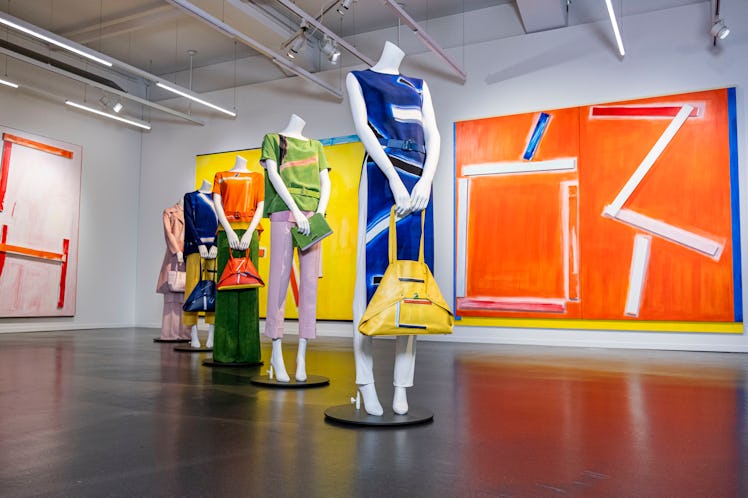The story behind the Swiss brand Akris is not unlike a fairy tale. One hundred years ago in St. Gallen, Switzerland, Alice Kriemler-Schoch began sewing aprons in her atelier. Through war, economic crisis, and the death of her husband, she persevered, “You must never say you can’t do something; just have a go, and then suddenly you will find that you can do it,” Alice wrote in an undated diary entry.
As her atelier grew, she expanded her team and bought an office building, which remains Akris’ home base to this day. After her husband passed, her son Max came on to help with sales, a job he planned on doing for one year; after five years, he became director. In 1960, the family fashion house officially became Akris, an acronym devised by Max when he was 19, composed of the letters in Alice’s name. Albert Kriemler, Max’s son, began working at Akris immediately following his high school graduation. Today, Albert is the creative director, and his brother, Peter, is CEO. Perhaps more than a fairytale, the story of Akris is the story of a family legacy.
In celebration of a century of Akris, Kriemler has curated an exhibition at Zurich’s Museum für Gestaltung (on view through September 24) and authored an accompanying book titled Selbstverständlich, a term he often uses to describe Akris. Its literal translation is “of course,” but colloquially can mean “effortless,” a word that instantly comes to mind when admiring the house’s feminine simplicity.
“When designing a garment, I always have the woman wearing it in mind: Can she travel in it, is the fabric light enough she will feel free and at ease? It needs to serve her first,” Kriemler tells me. “An exhibition has a totally different purpose. Yet, what I wanted this exhibition and my designs to have in common are moments of surprise. The atmosphere is one of surprise and discovery.”
Kriemler’s promise is not an empty one. Unlike most museum shows where touching is strictly prohibited, this exhibition invites viewers to feel fabrics and slip into cashmere coats. While materials are crucial to any fashion house, the textiles of Akris carry generations of innovation. It’s no coincidence that Alice Kriemler-Schoch took up embroidery in St. Gallen all those years ago; the city has been known for producing some of the finest textiles since the 15th century and developing the first embroidery machines at the beginning of the 19th. Weaving the past into the present, the centennial showcases Kriemler’s designs alongside the pieces of art that inspired them or vice versa.
This symbiosis between Akris and art has been at the core of their designs since Kriemler took over as creative director. “What I value the most about these collaborations is that the collection emerges from intense interactions with the artists, themselves, or their estates,” he tells me. “It is an open collaboration where I share the full design process with the utmost respect for the art with the artist.” The Spring 2018 collection was inspired by the wooden dolls made by the architect and designer Alexander Girard. For Fall 2014, Kriemler worked with the German photographer Thomas Ruff, the brand’s first collaboration with a living artist. Inspired by Ruff’s photographs of stars, Kriemler developed LED embroidery—small, battery-powered lights sewn into silk crêpe that twinkled down the runway.
“We spent so many hours working on those LED pieces, invisibly welding the electrified thread while sewing a perfect evening gown that chimed with the inspiration in the art,” Feliciano Pisaturo, head of Akris’ sewing atelier since 2002, recalls in Selbstverständlich. “It was pure craftsmanship.”
What the exhibition makes most clear is that a century is only the beginning. “For us, it’s not about what we’ve achieved, it’s about keeping moving. We’re always asking ‘What’s next?’” Kriemler writes in Selbstverständlich, “Because fashion is always about moving forward, and for us, fashion means a perpetual process of evolving that will probably never come to a halt.”
